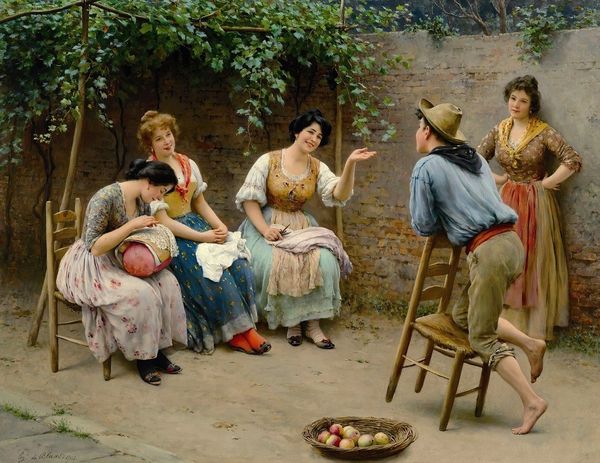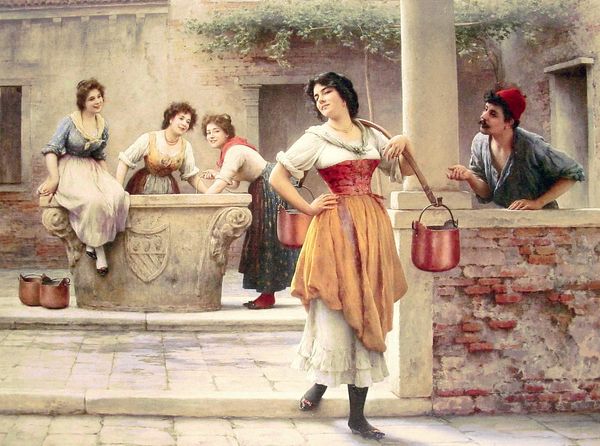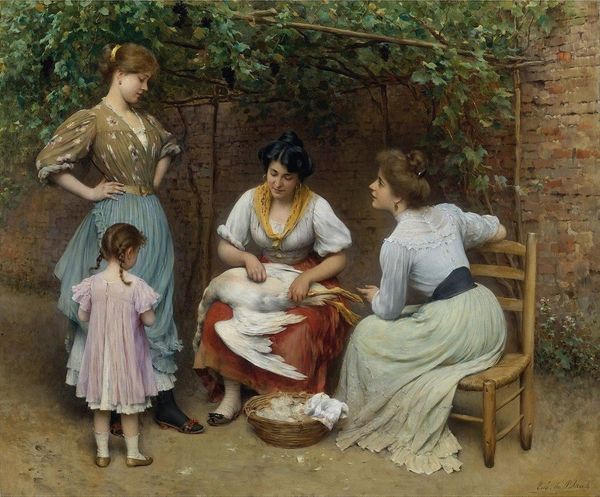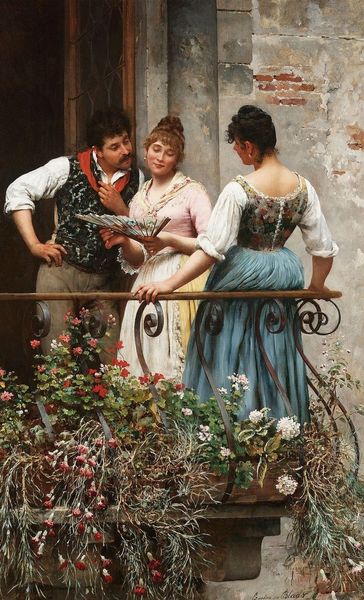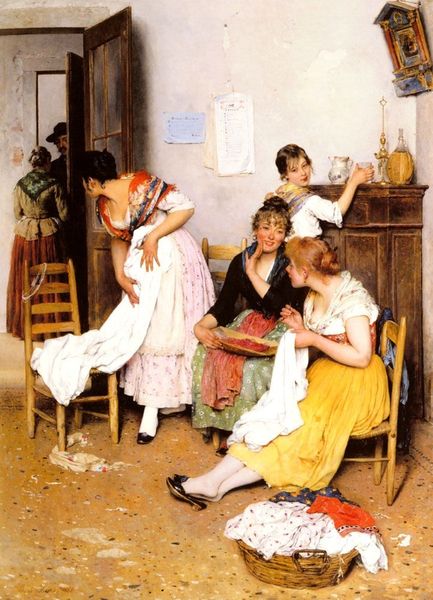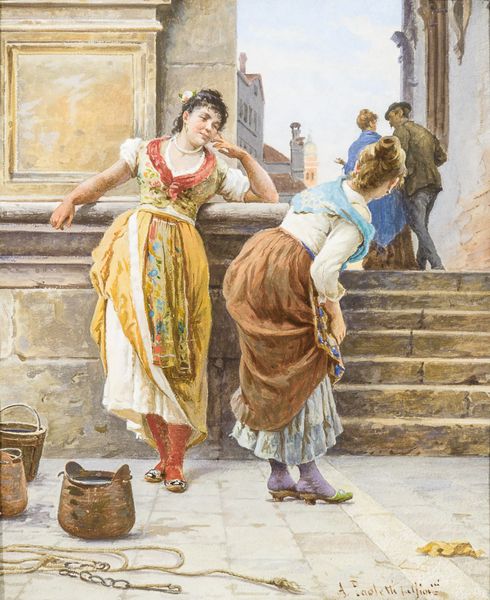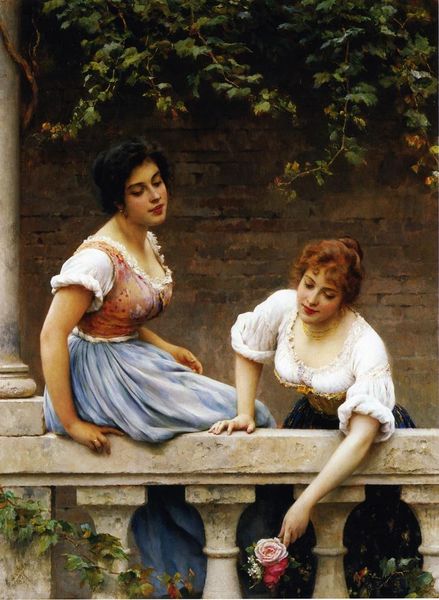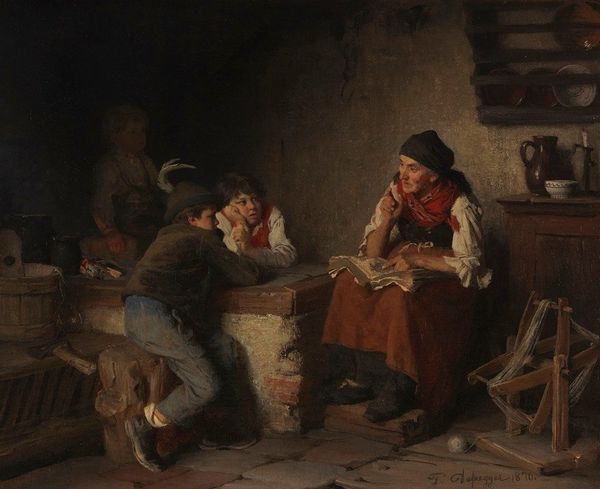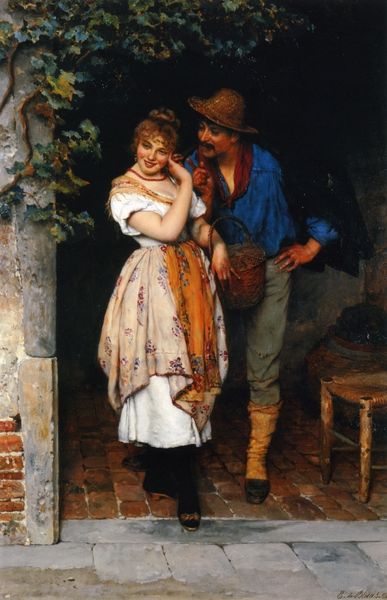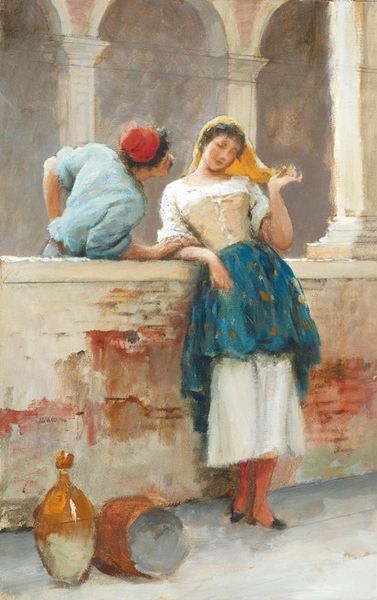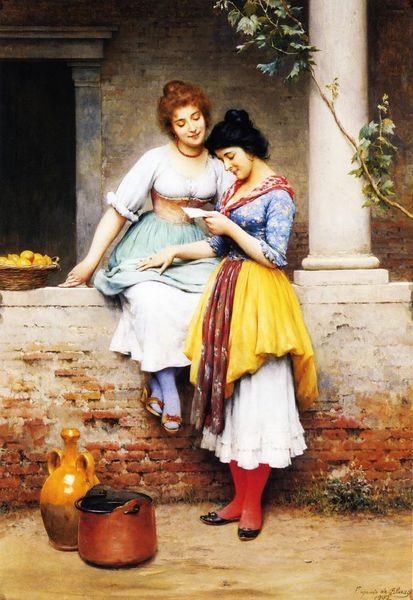
Dimensions: 100.4 x 83.8 cm
Copyright: Public domain
Curator: Let’s discuss "The Flirtation," a genre painting crafted in 1904 by Eugene de Blaas, rendered with oil paint and gouache. It has a rather sentimental mood. Editor: My first impression is that the light in this piece is lovely; soft, and almost dreamlike. There's a golden tint bathing everything, unifying the subjects with their environment. It feels idyllic, almost staged, in a very appealing way. Curator: I agree about the romantic light, and that the characters appear posed rather than caught unaware. Considering de Blaas’ broader body of work, we often see these idealised scenes of Venetian or Tyrolean life, removed from the realities and hardships of the working classes. These paintings served to offer bourgeois audiences fantasies of escape into more picturesque locales populated by presumably simpler, happier folk. The flirtation here isn't just a playful moment; it's a constructed representation of leisure and beauty designed for consumption. Editor: And there is something compelling in the composition’s focus on these three figures arranged almost as in a pyramid: it draws my eye upward toward the man leaning into the young women on the bench, framed by that rough stucco wall and some foliage. It guides the viewer's gaze, prioritizing narrative, and I am caught by how tactile the work looks. Look at how different textures—skin, cloth, stone—are all depicted with such attention to detail and variation. Curator: Right, this relates to debates concerning representation itself. How art often romanticizes aspects of class relations in an attempt to produce an exotic, aestheticised commodity which is in itself a manifestation of privilege and an erasure of broader socio-political realities within early 20th century Italy. Editor: Indeed. For all our delving into cultural context and social meanings, Eugene de Blaas’ artwork leaves me considering light, depth, form. Curator: Ultimately, considering "The Flirtation" situates this romantic artwork squarely within discussions of romanticization and gender roles within the history of genre painting. Editor: It shows the power that form can hold in storytelling.
Comments
No comments
Be the first to comment and join the conversation on the ultimate creative platform.
